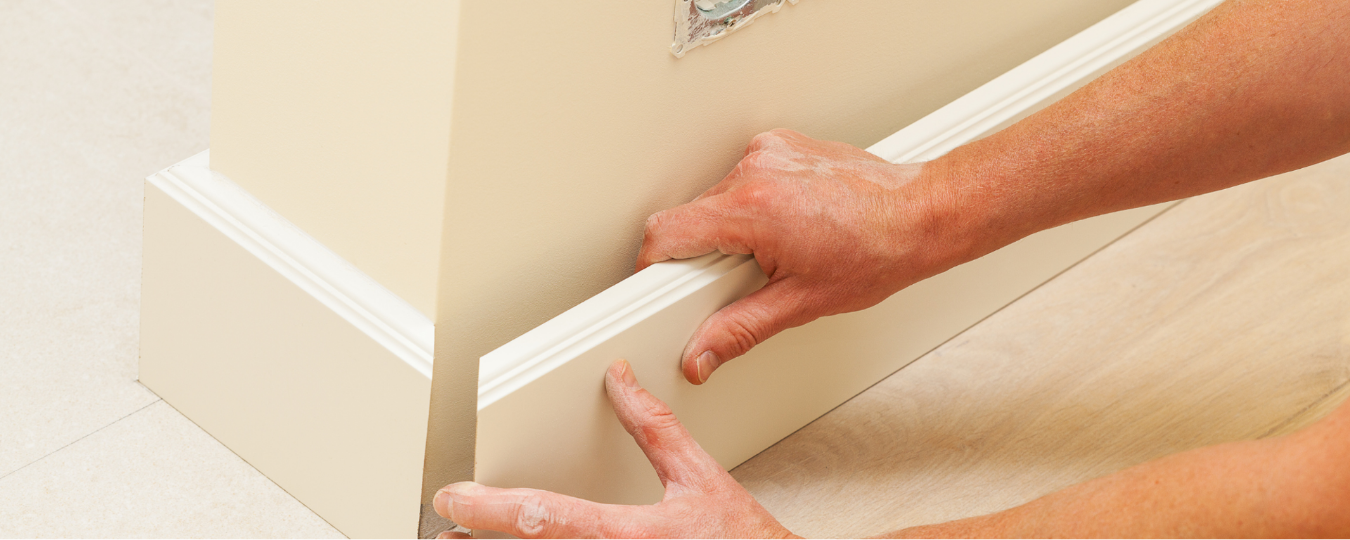How to Remove and Refit Skirting Boards

If your skirting has been damaged, you will need to remove and refit skirting boards. This is one of the more difficult tasks, and it may be better to hire a professional. If you do decide to do the job yourself, our expert guide will help.
Prise Board from Wall
The skirting board will be attached to the wall with screws or nails into the ground boards. Ground boards are pieces of timber attached to the bottom of walls, usually at 24 inch spacing. The first step is to pry the board about 1cm away from the wall to access the rear of the board and the screws or nails. Wear protective gloves. Balance a crow bar against a piece of wood to protect the wall, as shown, and carefully prise the board away from the wall. If you have trouble getting the crowbar in, first prise the board off the wall with a flat head screwdriver or chisel, tapping it down between the board and wall.
Insert Wedges
Insert wedges into the gap that you have made behind the skirting board. If you don’t have wedges, use small, suitably shaped pieces of wood.
Cut Screws or Nails & Remove Board
Identify where the screws or nails are behind the board, and use a hacksaw blade to cut through them. If you don’t have a hacksaw blade, a hammer and bolster chisel can also be used. This step is to avoid damage to the skirting board in the event that you might want to reuse it. You can now lift away the skirting board. Tip: when fitting skirting boards, start at the longest wall as off-cuts may suit shorter walls.
Fit Board
Now to refit the board again or to fit your new board. Measure and cut new skirting boards to fit. Put the board in place and screw through it into the ground boards. If it is a partition wall, drill through to the stud timber.
Shaping New Board Corners
Carefully mitre the skirting boards at 45 degree angles. Some planning will be required to get them to match perfectly.


Leave a Comment